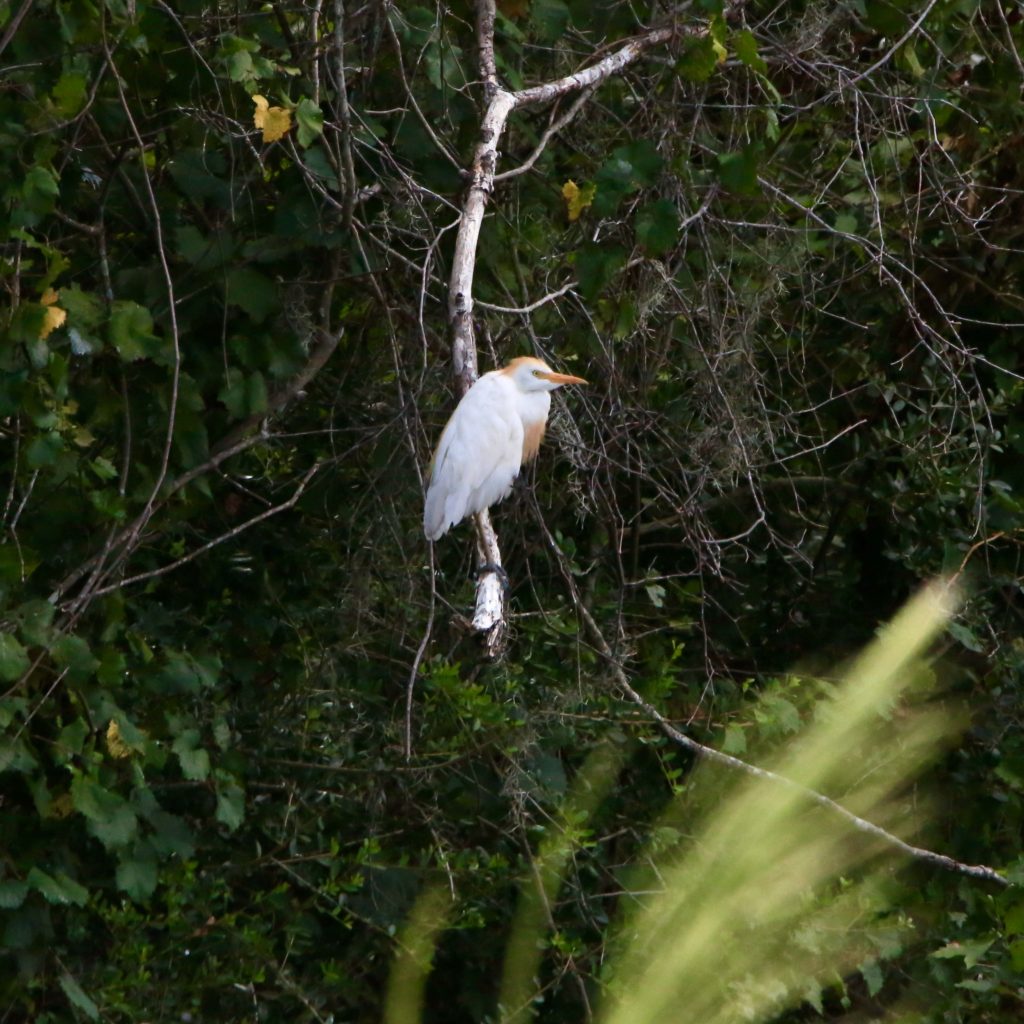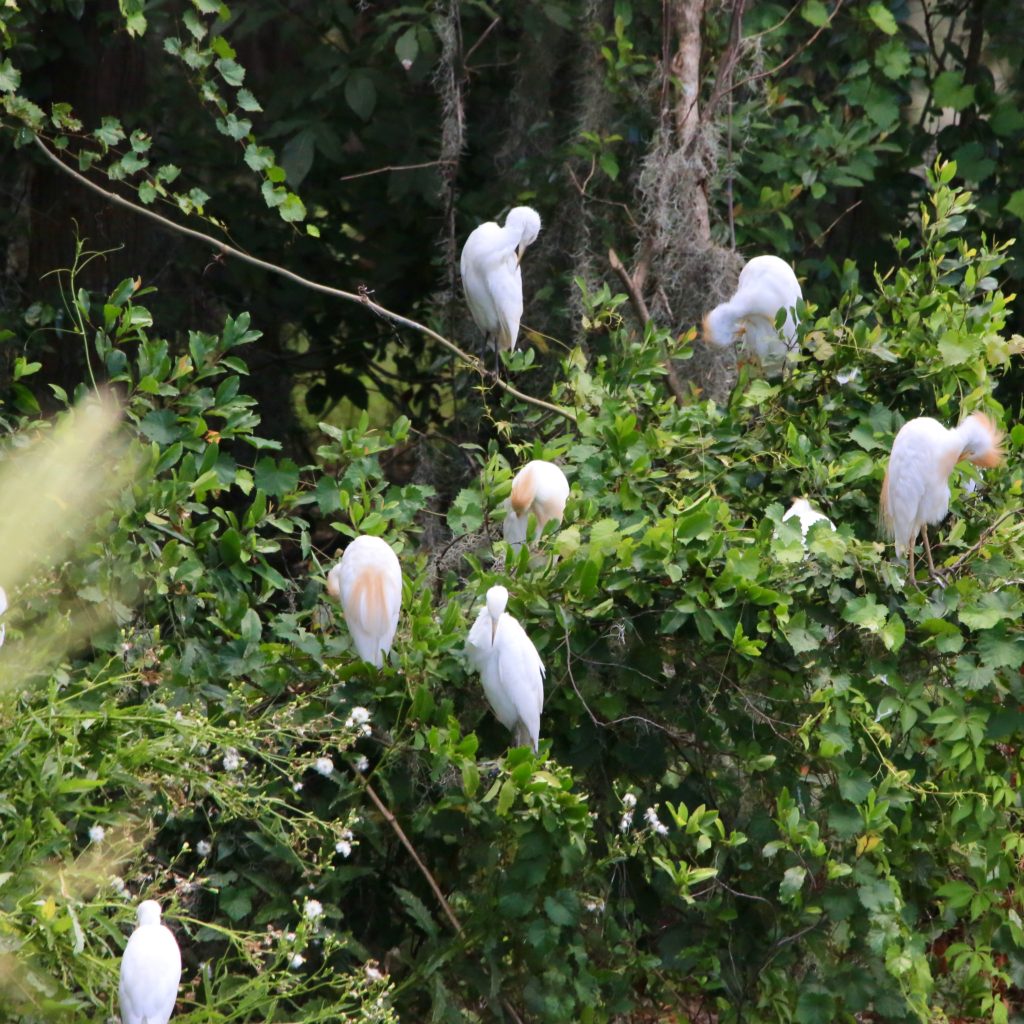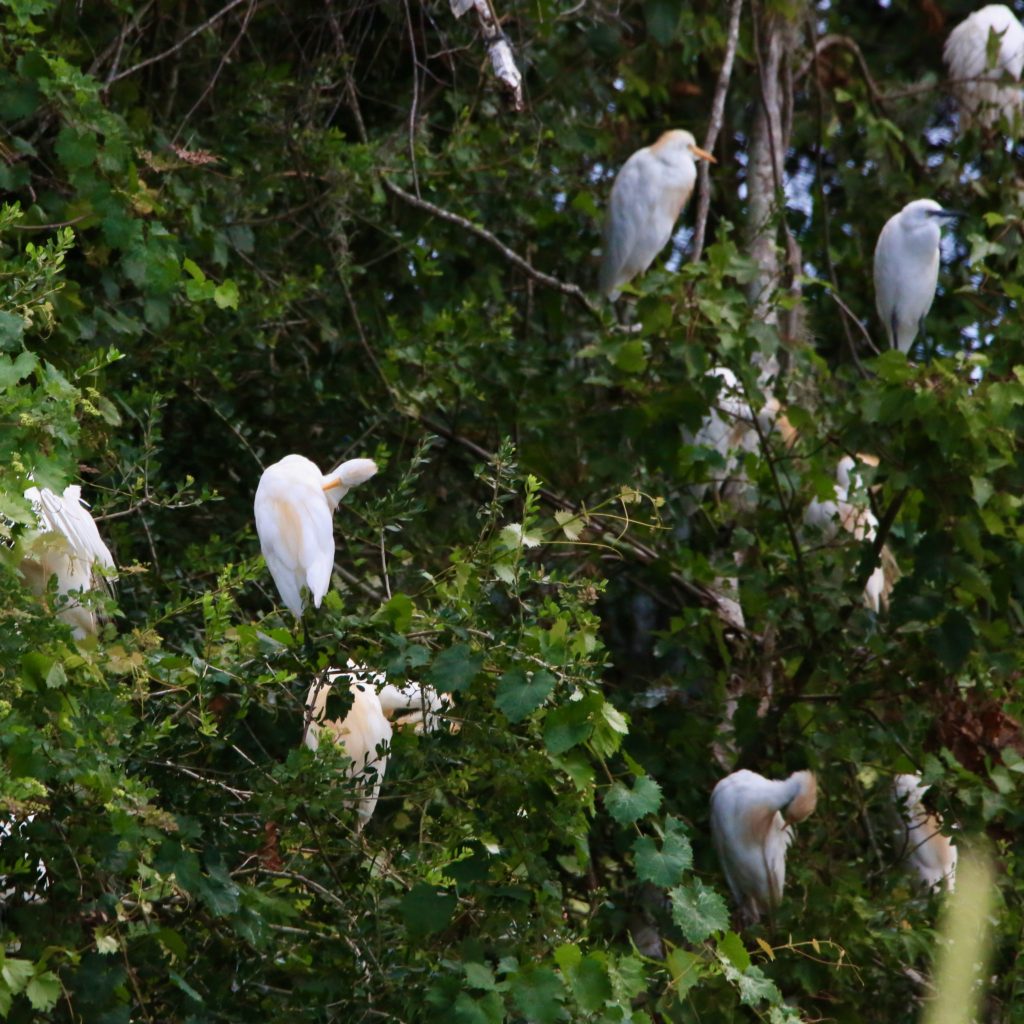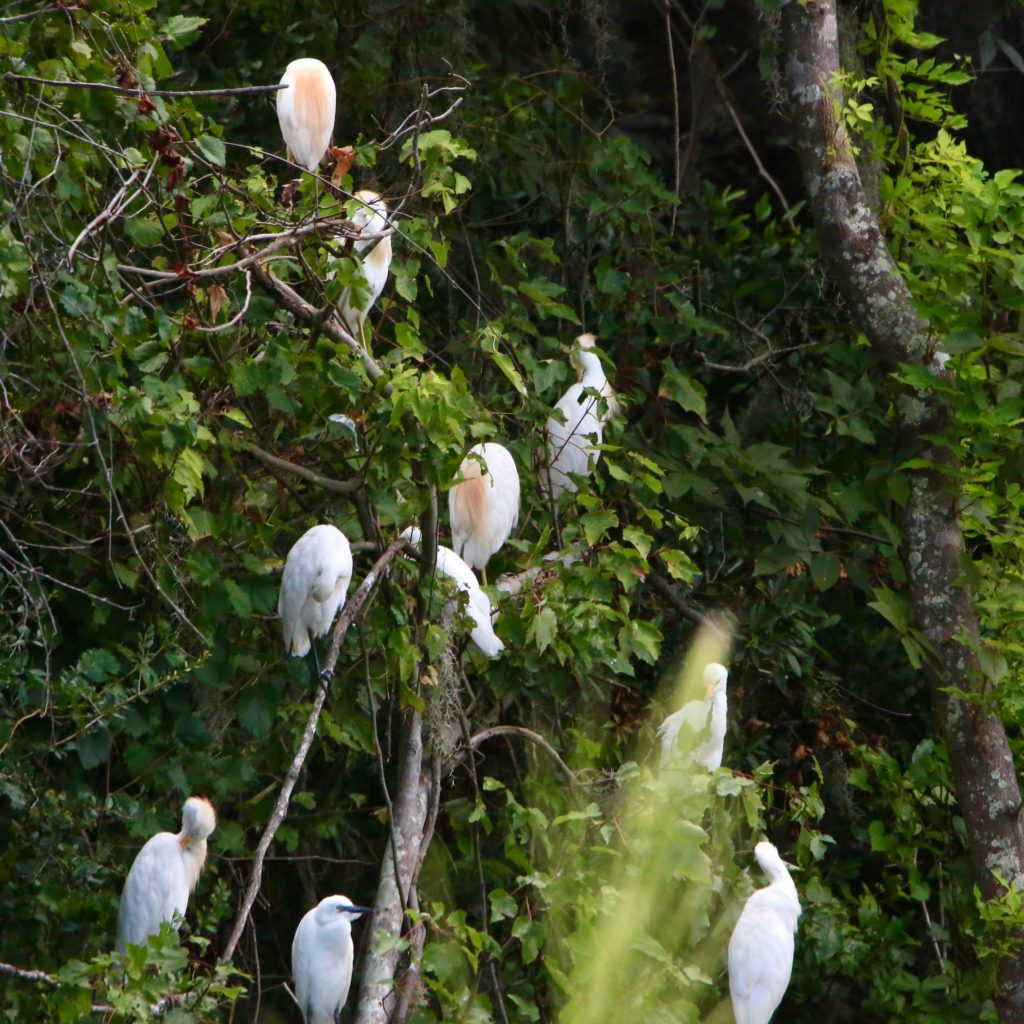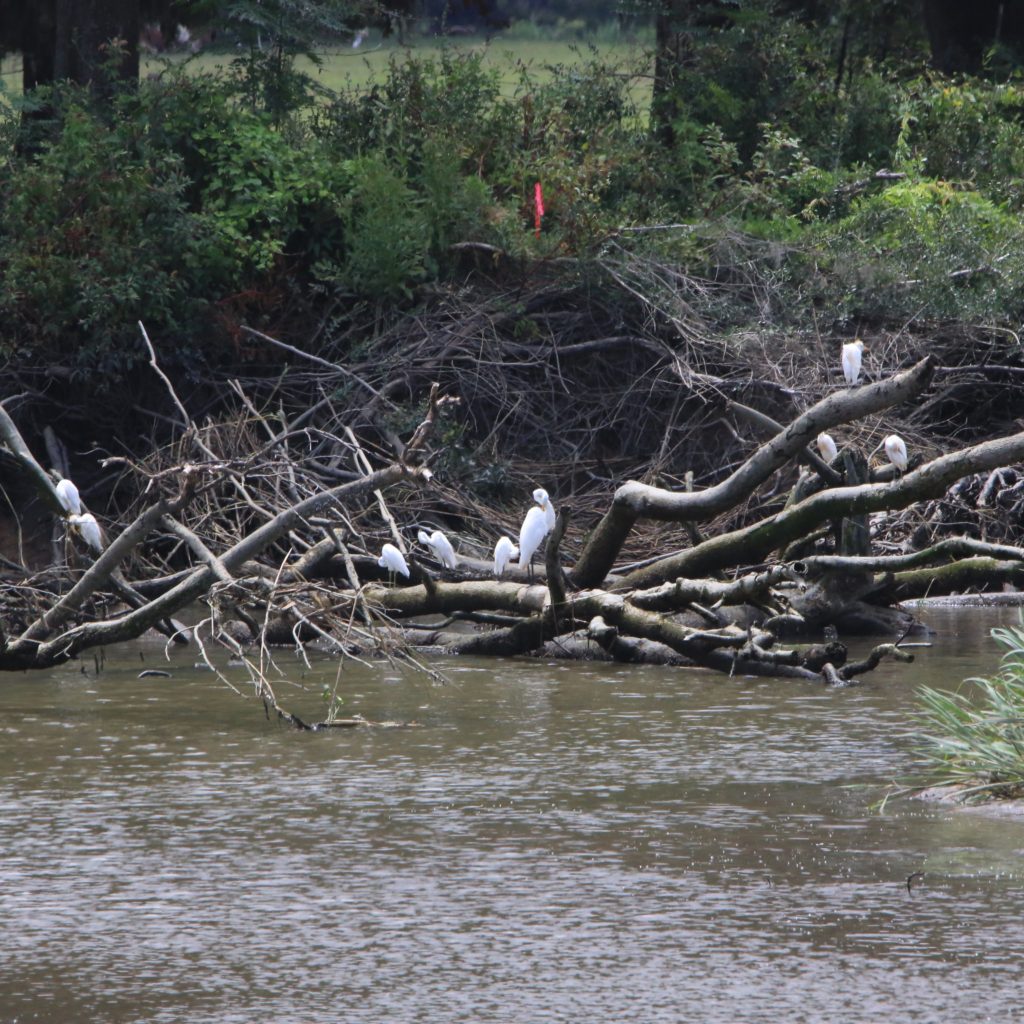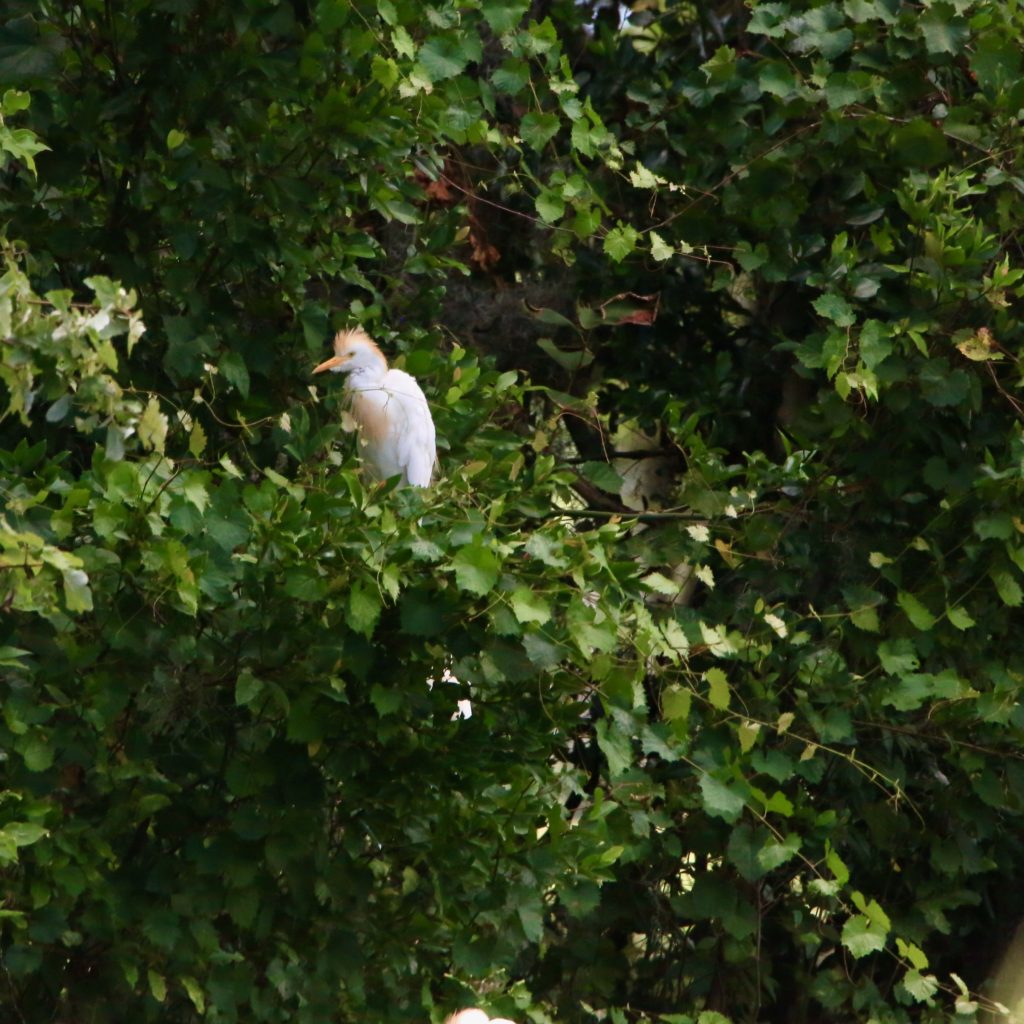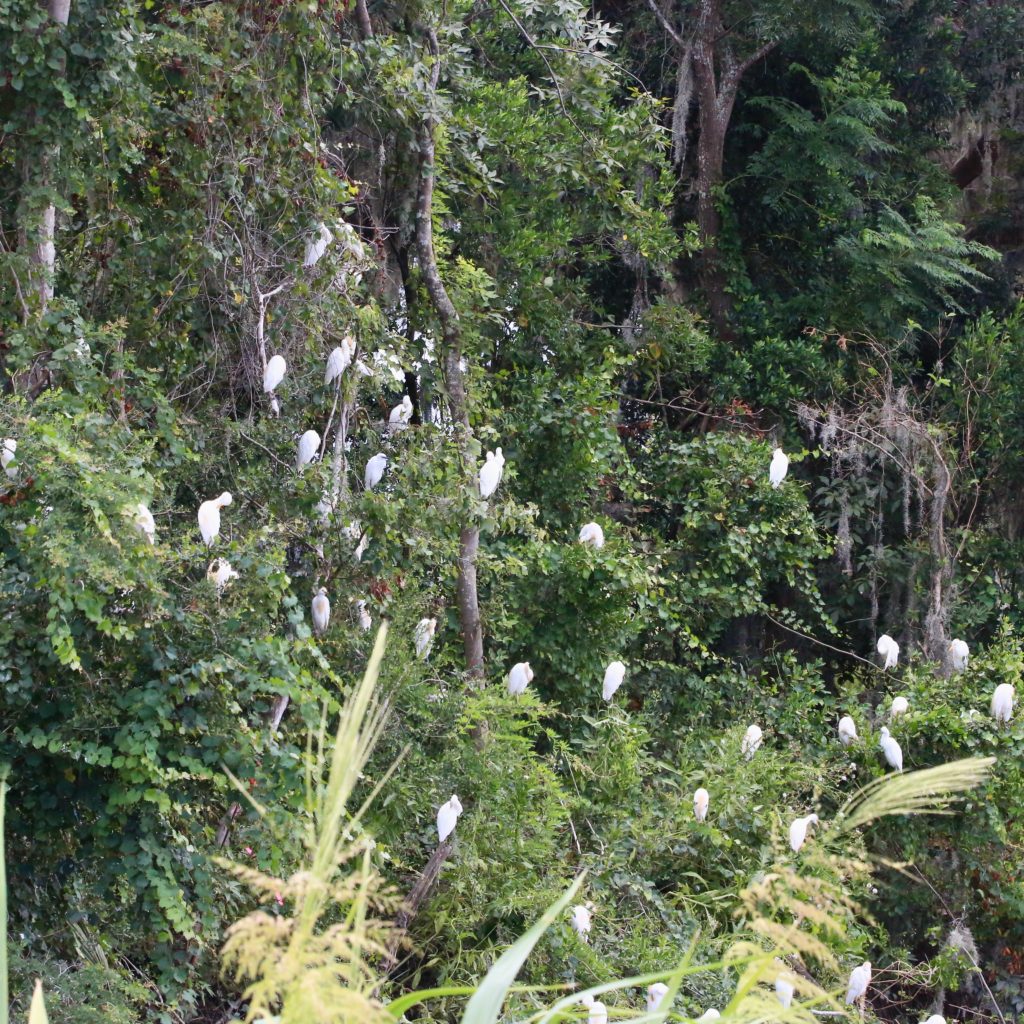
Cattle Egret
A Cattle Egret is a fun bird to see while bird watching. Below are some tips to help you identify Cattle Egrets. We have also put together a list of fun Cattle Egret t-shirts, Cattle Egret bird patches, birdhouses, bird feeders, binoculars, stickers, and other fun bird watching items.
About Cattle Egrets
They are native to Africa but have somehow found their way to northeastern South America. The Cattle Egrets are found mostly on fields foraging at the feet of grazing cattle or riding on their backs picking at ticks. They have short thick necks which make their head bob as they walk around. It has an expanded range owing to the widespread of human cattle farming.
Description and Identification
Cattle Egrets are white birds with short and thick necks and have a hunched posture. The non-
breeding adults have white plumage, grayish or yellowish legs, mainly yellow irises, and a
sturdy yellow bill. Adults have a wingspan of 35-38 inches, are 18-22 inches long and generally
weigh between 9.5-18.1 oz. Adult males are visibly larger than their female counterparts.
Breeding adults develop goldish-orange buff plumes on the crown, back, and breast. The males
also have slightly larger breeding plumes as compared to the females. Juvenile Cattle Egrets
have completely white plumes with grayish-black bills and legs.
Cattle Egret Color Pattern
They are white in color all over their body with a yellow beak and legs. During the breeding season, they develop golden feathers on their crowns and breast while the young ones have dark beaks and legs.
Cattle Egret Size
They are a small and compact bunch with relatively short legs and short thick and straight bills. They have medium rounded wings. Relative measurements include:
- Length 46 – 56 cm
- Weight 270 – 512 g
- Wingspan 88- 96 cm
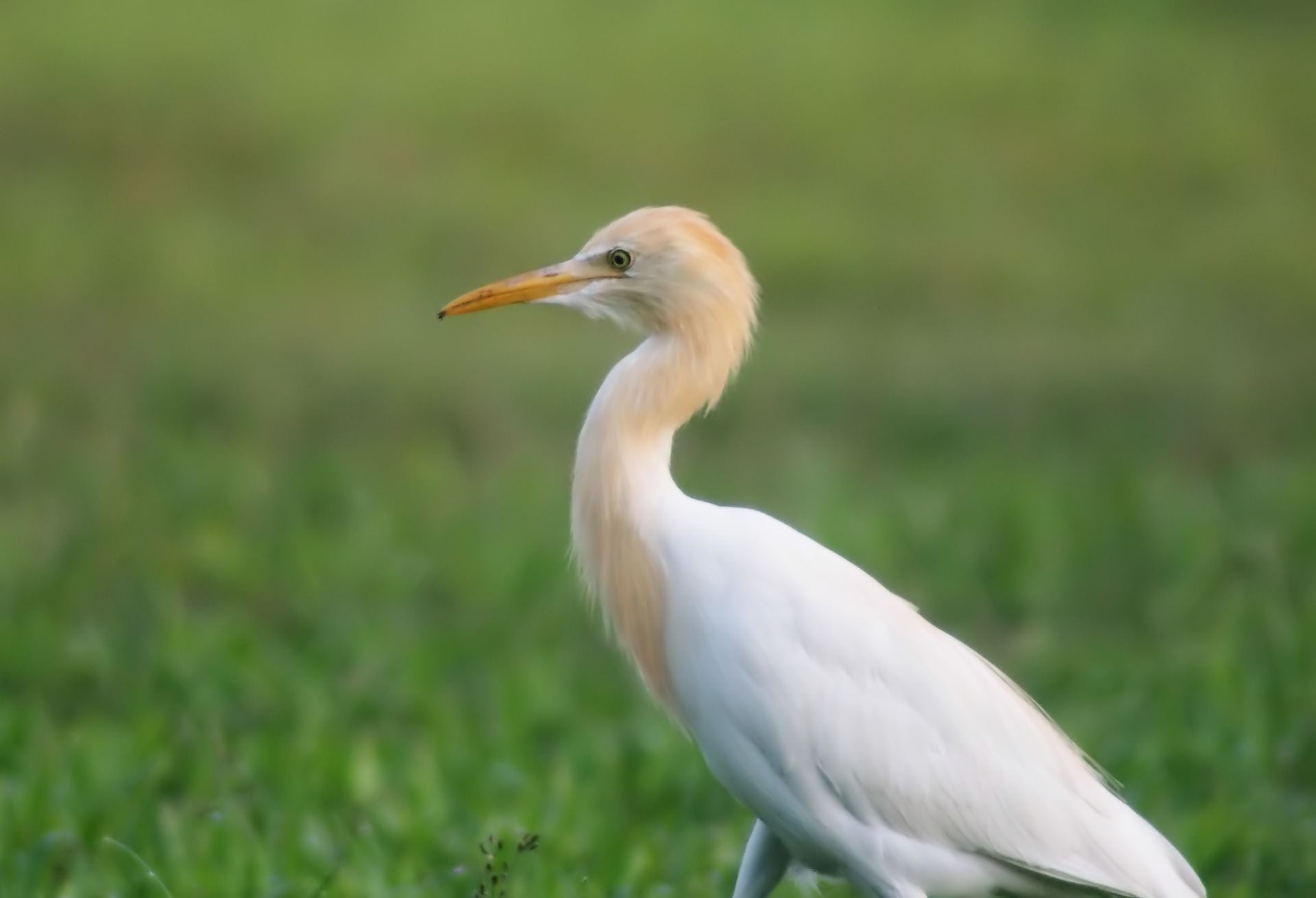
Cattle Egret Behavior
Egrets flock all year forming a large colony. The male has the responsibility of defending a display territory while pairs protect nest territories. The egret is a monogamous bird within the breeding season with some having two females and one male. Courtship by the male is displayed when he spreads his wings fan their golden feathers and prance step by step.
What Cattle Egrets Eat
These birds are primarily insectivores, feeding on small worms and insects such as crickets,
locusts, etc. displaced due to the movement of the cattle. They are known to favor feeding on
grasshoppers. Other prey includes flies, beetles, mollusks, frogs, tadpoles, caterpillars, etc.
During the nesting period, to fulfill their protein requirements they are known to feed on frogs.
They are social feeders and rarely partake in feeding alone. They have various foraging
methods, some of which include, slow walking next to the prey, running, hopping, fly catching,
etc. Typically, they walk slowly next to the prey along wet edges or grass. They are also
attracted to fires, where they feed on fleeing insects.
Cattle Egrets have a wide range of adaptable diets consisting of insects, fish, frogs, mammals, and other birds. Their main delicacy is crickets, grasshoppers, and other similar insects.
Where Cattle Egrets Live
Cattle Egrets, as per their name are often spotted alongside bigger cattle such as cows,
buffaloes, and in certain cases hippopotamuses. They prefer drier habitats as compared to other
species of Herons and Egrets, often seen around farms, pastures, marshes, etc. They are also
known to feed along the margins of various wet areas such as riverbeds, shallow marshes,
ponds, and edges of streams.
The Egret can be found in coastal barrier islands like riversides, woodlands, and upland forests. In the spring and fall migration, they stop along shorelines and farm fields, and during winter some spend it in the southern part of the United States.
Range and Migration
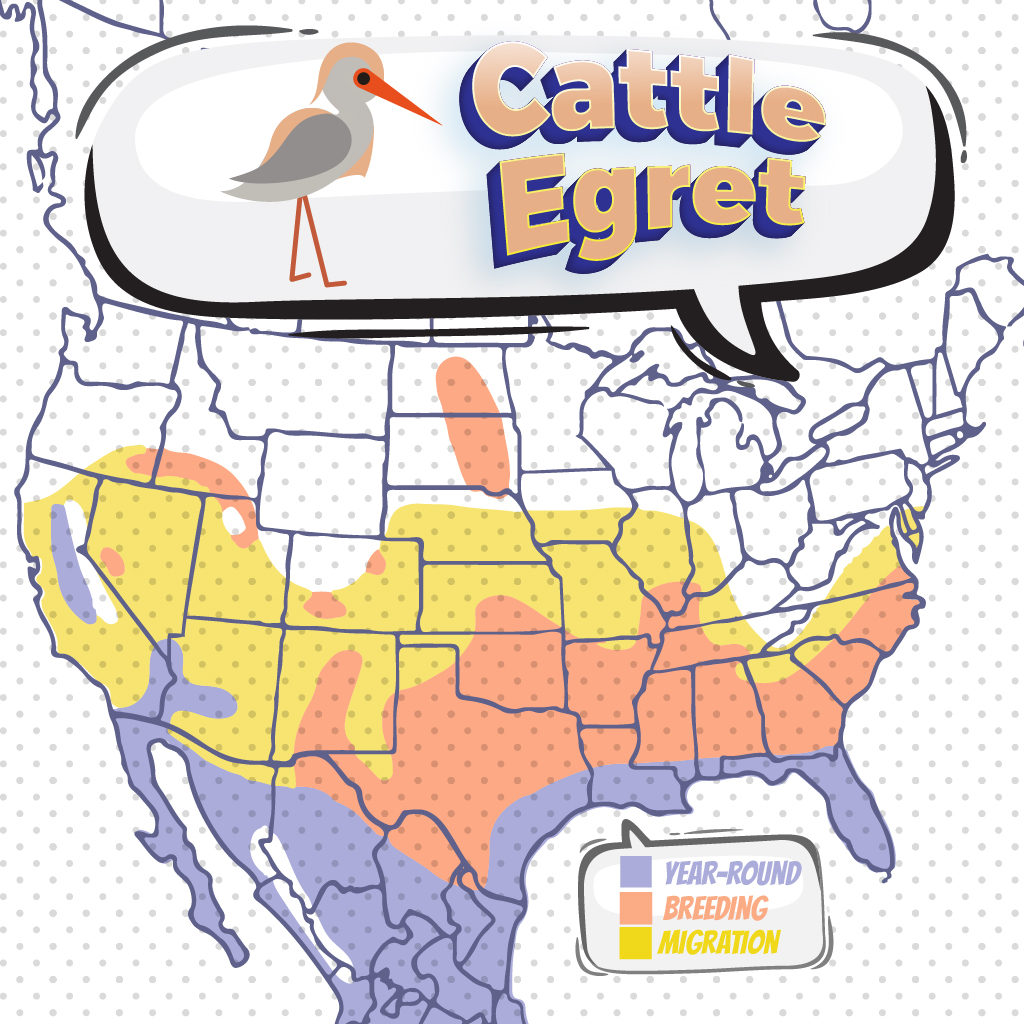
Cattle Egrets have one of the widest known ranges in birds. Originating in Africa, they made their
way into South America in the late 19th century and expanded into North America in the mid-
20th century. Cattle Egrets are both migratory and sedentary. Migrating populations move from
colder to warmer climates in the Northern Hemisphere. They migrate in small flocks over
extended periods of time. In North America, they are known to winter in warmer climates of
Louisiana, Florida, and South California. Juvenile Cattle Egrets are known to fly over 3,100
miles and can be seen flying overseas and oceans.
Cattle Egret Lifecycle
Males usually pick nest sites on the outer top branches of a tall tree or shrub in the swamp. Females lay 1 to 5 eggs and incubation is done by both parents taking about 23 days. They later leave the nest after 2 weeks after hatching.
Cattle Egret Nesting
Breeding Cattle Egrets, typically start nesting from the age of two. They are known to breed in
colonies near wetland and water bodies. They usually join colonies of other herons and egrets
during the nesting period. The nesting season varies depending on the availability of food. In
North America, they typically breed during the spring and summer, in the months of April and
May. They nest in protected environments of reed beds, bushes, shrubs, and in certain cases
trees near water bodies and wetlands. Groups of males come together to display aggression
over territory, this attracts the females, who then encroach the nests. Once a female lasts in the
nest for a few hours, a bond is formed between the two. The pair lasts for a period of 3-4 days.
Cattle Egrets are non-monogamous and different mates are chosen every nesting season.
Ornithology
Bird Watching Academy & Camp Subscription Boxes
At Bird Watching Academy & Camp we help kids, youth, and adults get excited and involved in bird watching. We have several monthly subscription boxes that you can subscribe to. Our monthly subscription boxes help kids, youth, and adults learn about birds, bird watching, and bird conservation.
Bird Watching Binoculars for Identifying Cattle Egrets
The most common types of bird watching binoculars for viewing Cattle Egrets are 8×21 binoculars and 10×42 binoculars. Bird Watching Academy & Camp sells really nice 8×21 binoculars and 10×42 binoculars. You can view and purchase them here.
Cattle Egret T-shirts
If you love the Cattle Egret you should purchase a Bird Watching Academy & Camp T-shirt. To help support bird conservation we donate 10 percent to bird conservation activities.
Cattle Egret Iron On Patches
Kids, Youth, and Adults love to collect our Bird Watching Academy & Camp iron on patches. Our bird watching patches help you keep track of the birds you have seen an identified. You can also display the patches on our Bird Watching Academy & Camp banners.
The Cattle Egret is a great iron on patch to start your collection with. The patches are durable and can be sewn on or ironed on to just about anything.
Best Bird House for Cattle Egrets
There are many types of bird houses. Building a bird house is always fun but can be frustrating. These 4 bird houses have become our favorites. Getting a bird house for kids to watch birds grow is always fun. We spent a little extra money on these bird houses but they have been worth the higher price and look great.
Bird Feeders For Cattle Egrets
There are many types of bird feeders. Here are our favorite bird feeders for your backyard. We use all of these bird feeders currently. Kids will have a great time watching birds eat at these bird feeders. Using this collection of bird feeders will provide a wide variety and many types of birds.


